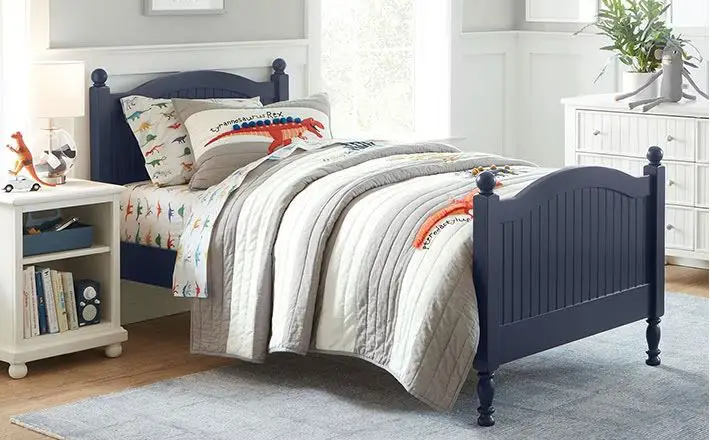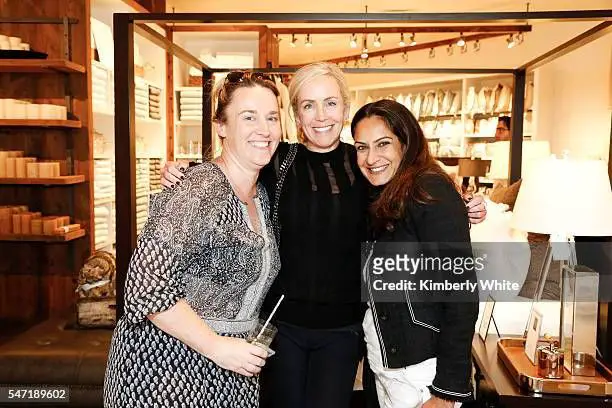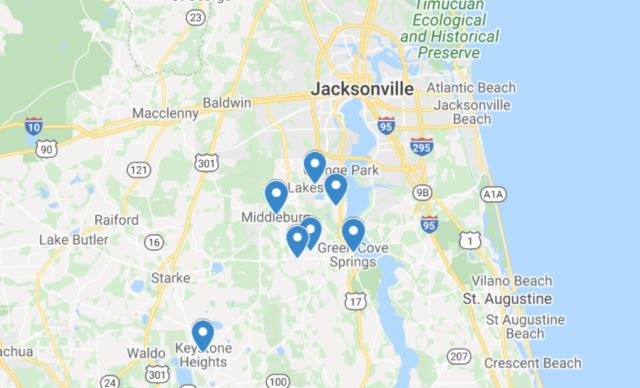Is Pottery Barn And Pottery Barn Kids The Same?
Introducing Pottery Barn and Pottery Barn Kids
The original Pottery Barn was co-founded in 1949 in Manhattan by Paul Secon and his brother Morris 1. When the first store opened on 19th Street, it was only 12 feet wide but filled with pottery the brothers had discovered in three old barns 2. The brand positioned itself as a provider of eclectic home goods and expanded to mail order catalogs in the 1960s.
In 1986, Gap acquired the Pottery Barn brand. Under Gap’s ownership, Pottery Barn expanded its catalog and opened retail locations across the United States. The brand became known for its commitment to natural fibers and materials.
In 1999, Williams-Sonoma acquired Pottery Barn. That same year, Pottery Barn Kids was introduced as a children’s line, offering furnishings, bedding, and decor for kids’ rooms. Pottery Barn Kids helps parents create spaces that grow with children by offering high-quality, durable products.
Store formats
Pottery Barn Kids operates both standalone stores and stores integrated within regular Pottery Barn locations. According to Pottery Barn’s website, there are currently over 70 standalone Pottery Barn Kids stores located across the United States. The stores are typically between 8,000 to 12,000 square feet and found in upscale shopping malls and lifestyle centers.
In addition to the standalone stores, many regular Pottery Barn locations feature a Pottery Barn Kids section integrated into the store. These integrated stores still offer the full Pottery Barn Kids product assortment and experience. The benefit of the integrated stores is that customers can shop for Pottery Barn home furnishings and Pottery Barn Kids children’s items in one convenient location.
According to the Pottery Barn Kids website, popular locations for Pottery Barn Kids stores include Atlanta, Boston, Chicago, Dallas, Houston, Los Angeles, Miami, New York City, San Francisco, Seattle and Washington DC. The stores are located in upscale suburban and urban shopping centers.
Citations:
[1] https://rentechdigital.com/smartscraper/location-reports/potterybarnkids-locations-in-united-states
Product Offerings
Both Pottery Barn and Pottery Barn Kids offer a wide selection of home furnishings and decor. However, there are some key differences in the specific products each brand focuses on.
Pottery Barn is primarily focused on furnishings and decor for adults. Some of their most popular products include:
- Living room furniture like sofas, armchairs, coffee tables, and media consoles (source)
- Bedroom furniture like beds, dressers, nightstands, and armoires (source)
- Dining room furniture like tables, chairs, buffets, and hutches (source)
- Home office furniture like desks, filing cabinets, and bookshelves (source)
- Kitchen and entertaining items like dinnerware, glassware, and serveware (source)
- Decor like rugs, pillows, throws, wall art, mirrors, and lighting (source)
In contrast, Pottery Barn Kids focuses on furniture and decor for children’s spaces. Some of their key products include:
- Kids bedroom furniture like beds, dressers, desks, and bookshelves (source)
- Nursery furniture like cribs, changing tables, and gliders (source)
- Playroom furniture like storage, tables, chairs, and toy organizers (source)
- Kids bedding like quilt sets, duvet covers, sheets, and pillows (source)
- Kids decor like wall art, mirrors, mobiles, lamps, and rugs (source)
- Toys, games, books, and crafts (source)

Similarities in product design
When it comes to product design and aesthetics, there are many similarities between Pottery Barn and Pottery Barn Kids. Both brands feature a classic, timeless style often described as “coastal cottage” or “shabby chic.” This look involves painted wood furniture, textured linens, and muted, tranquil colors like whites, taupes, and blues (https://www.potterybarn.com/pages/style-guides/coastal/).
Specific product lines that showcase this consistent aesthetic include the Mackenna bedroom collection offered by both brands. It features distressed wood nightstands, headboards, dressers, and more with brass hardware accents (https://www.potterybarnkids.com/products/mackenna-bedroom-collection/?catalogId=84&sku=3592177). The Seabrooke dining collection is also mirrored across PB and PB Kids with its driftwood-inspired table and weathered chairs (https://www.potterybarn.com/products/seabrooke-rectangular-fixed-dining-table/?catalogId=84). This consistency allows for a cohesive, on-brand look as children grow up and transition to mainline PB products.
Differences in Product Design
While Pottery Barn and Pottery Barn Kids both offer high-quality furniture and home goods, there are some key differences in how the products are designed for each brand. Pottery Barn Kids focuses its design approach on safety, durability, and size scaling for children’s spaces.
According to the Pottery Barn Kids website, their furniture collections are designed with child-safe materials like solid wood frames instead of composites which can emit VOCs. Products are rigorously tested for stability and undergo a host of safety tests around entrapment hazards, sharp edges, etc. Hardware is secure and assembled furniture passes stringent standards from ASTM and CPSC.
In terms of durability, PB Kids uses fabrics and upholstery designed to withstand spills, stains, and heavy play. Their products are meant to transition with kids from toddler to teen years. Sizing is another key difference, with dimensions scaled down for children’s spaces and ergonomics. For example, their beds, desks, and dressers are sized for specific age groups.
By focusing on safety, longevity, and appropriate scaling, the product design of Pottery Barn Kids sets their brand apart while still maintaining the quality and aesthetic consistency Pottery Barn is known for.
Branding consistency
The branding between Pottery Barn and Pottery Barn Kids is very consistent. Both brands use the same classic logo and neutral color palette across marketing materials, websites, and in-store displays. According to the Pottery Barn website, their branding aims to evoke “comfort and quality,” showcasing “natural materials” in a “relaxed style.” This consistent branding extends to Pottery Barn Kids as well.
Pottery Barn Kids campaigns and messaging align with the main Pottery Barn brand. For example, both brands emphasize high quality materials and craftsmanship with items “made to last.” Marketing highlights durable furniture built from hardwoods, kiln-fired ceramics, and natural fibers. Customization is also a key message across both brands. Pottery Barn Kids offers monogramming and personalization like its parent brand [1]. This allows customers to add their own personal touches to create spaces unique to their families.
The aligning brand aesthetics and messaging help strengthen the connection between Pottery Barn Kids and the main Pottery Barn brand. Customers can expect a consistent shopping experience whether they are browsing furniture for their home or their children’s rooms. The reliable branding builds trust and loyalty across both brands.
Price Points
Pottery Barn and Pottery Barn Kids have similar moderate to high price points overall, though there are some key differences. Pottery Barn focuses more on higher-end home furnishings and decor for adults, with most items ranging from $100-$1,000. Some signature furniture pieces can cost over $2,000. Pottery Barn Kids offers a wide range of price points for children’s furnishings, toys, clothing and decor. According to Pottery Barn Kids, common price ranges include:
- $50 – $100
- $100 – $250
- $250 – $500
- $500 – $1,000
- $1,000 – $1,500
- $1,500 – $2,000
While Pottery Barn Kids has some higher ticket furniture items similar to the main brand, they also offer more accessories and lower priced items like clothing and toys aimed at children and babies. Both brands run sales and promotions fairly regularly, and Pottery Barn Kids offers free shipping on orders over $99 according to this coupon site.
Manufacturing
Pottery Barn and Pottery Barn Kids have similar but separate manufacturing processes and suppliers. Both brands work with third-party manufacturers located in multiple countries. According to one source, Pottery Barn furniture items are made in the United States, Asia, and India, with only one main furniture category being produced stateside (https://allamerican.org/investigation/pottery-barn/). Pottery Barn Kids furniture is primarily manufactured in China, which is known for its skilled labor and manufacturing expertise (https://storables.com/articles/where-is-pottery-barn-furniture-made/).
While the brands leverage some of the same overseas suppliers, they maintain distinct product development and quality assurance teams. Pottery Barn Kids has facilities dedicated to safety testing and ensures all products meet juvenile furniture standards. The separate teams allow each brand to cater their manufacturing process to their target customer and product lines.
Conclusion
While Pottery Barn and Pottery Barn Kids have many similarities in terms of branding and product design aesthetic, they are differentiated retailers that cater to different target markets. Pottery Barn focuses on home furnishings for adults, with a classic and timeless style. Pottery Barn Kids offers furnishings and decor for children’s spaces, with bright colors, playful patterns and kid-friendly motifs. Both brands share an emphasis on quality materials and thoughtful design, just tailored to their respective customers. Pottery Barn tends to have more expensive classic decor, while Pottery Barn Kids prioritizes safety, creative themes and budget-friendly prices for growing kids. The two brands complement each other under the same parent company, but serve distinct purposes. Pottery Barn establishes the sophisticated style, while Pottery Barn Kids translates that look into whimsical, youthful versions for children.
Further Reading
If you want to learn more about Pottery Barn and Pottery Barn Kids, check out their websites:
You can browse their online catalogs to get a better sense of each brand’s products and style. The Pottery Barn site focuses on furniture and home decor for adults. Pottery Barn Kids features children’s furniture, bedding, decor and more. Both sites offer plenty of photos and information about their product lines and services.





